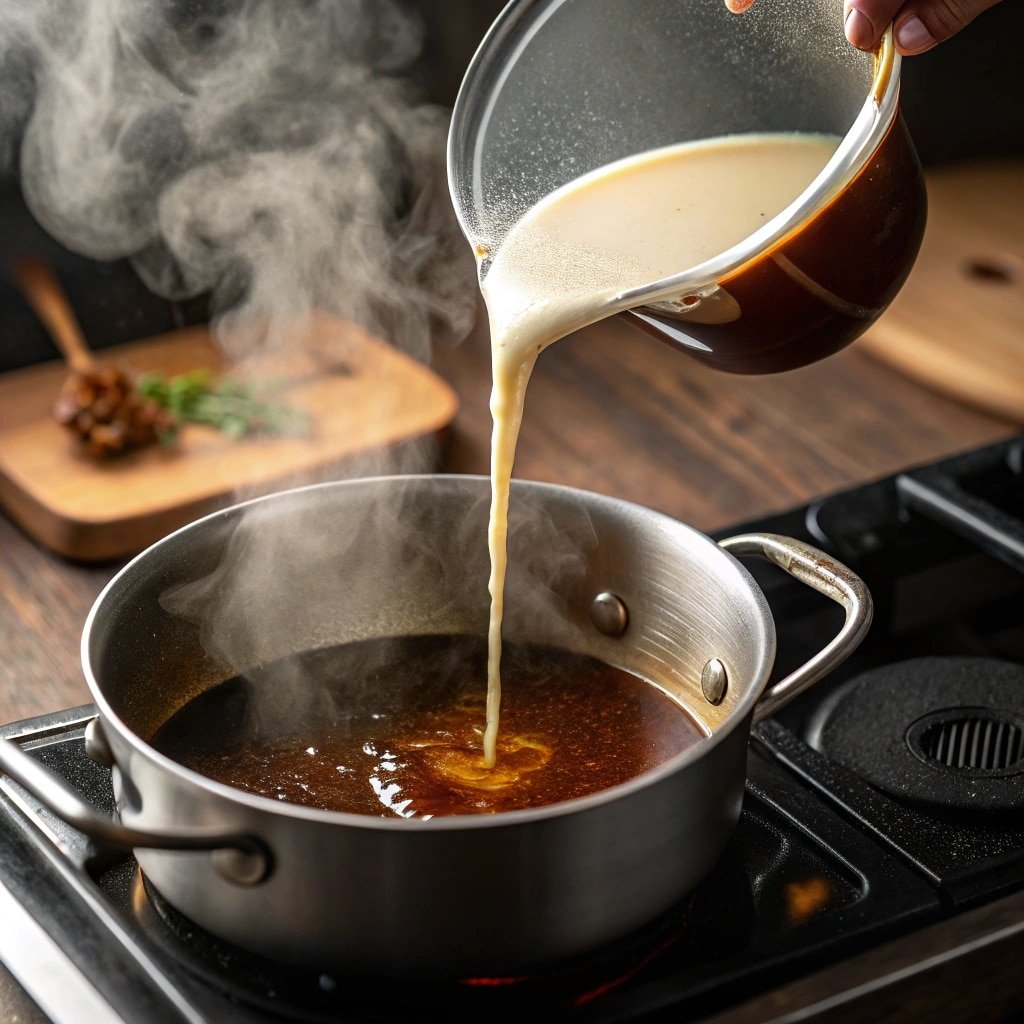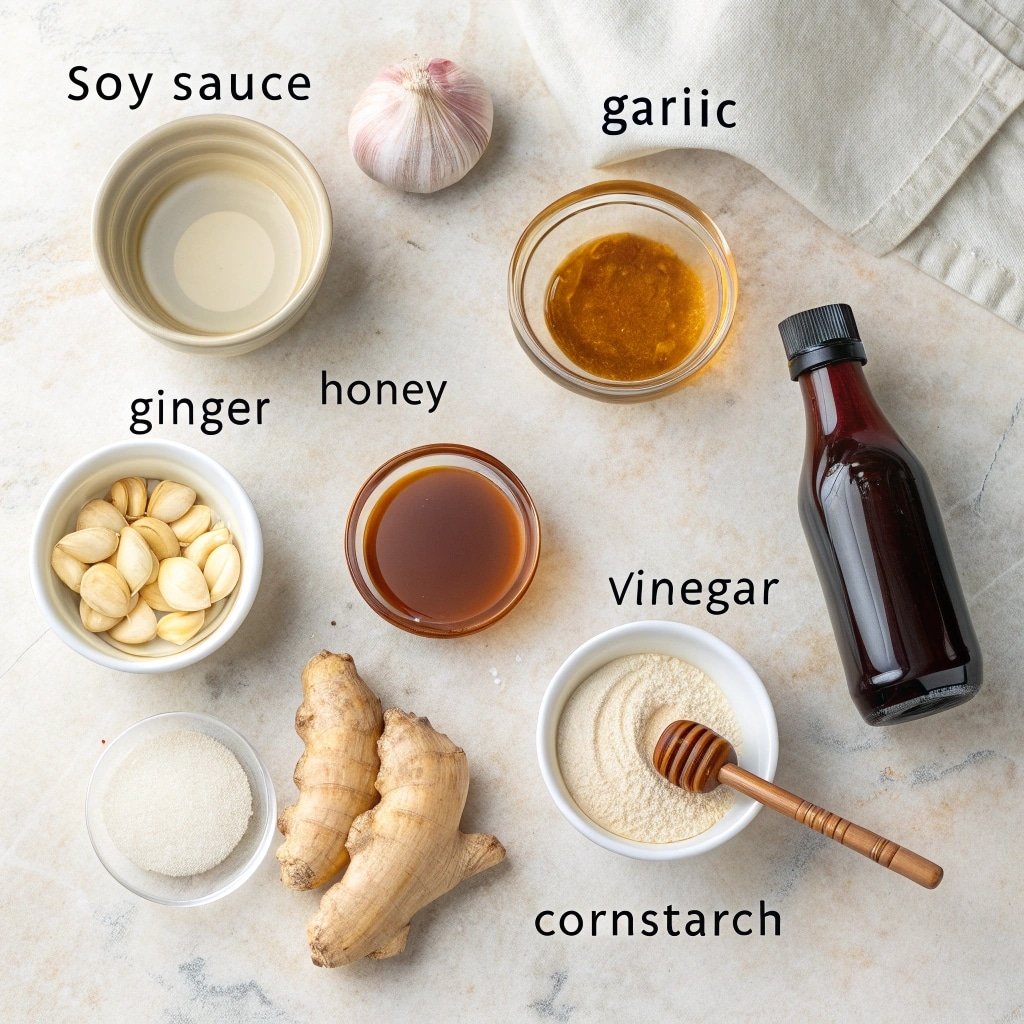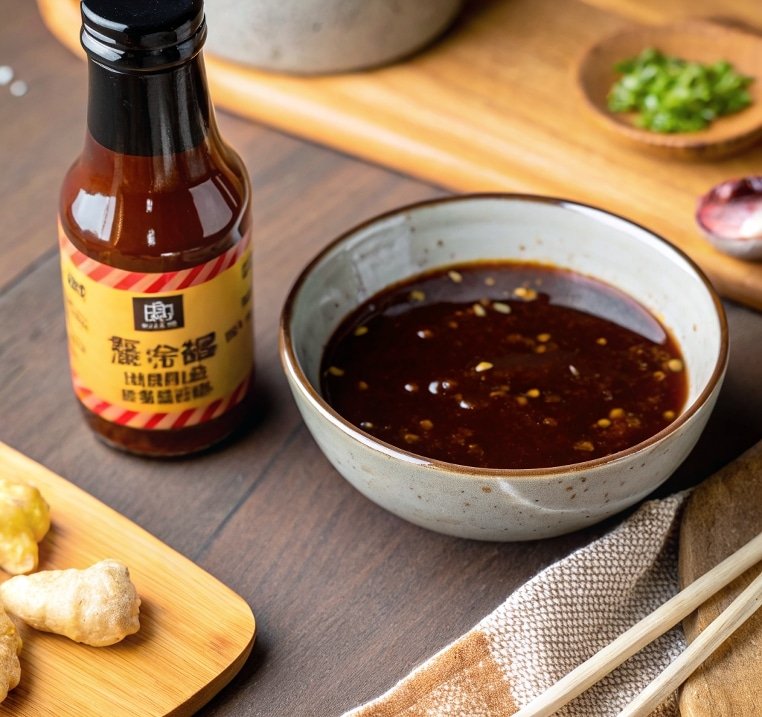teriyaki sauce recall has many home cooks double-checking their pantry. With food safety at the heart of every kitchen, understanding why certain sauces are pulled from the shelves is more important than ever. This article dives into the causes behind teriyaki sauce recalls, what brands have been affected, and how to spot signs that your bottle might not be safe to eat. From allergic reactions to mislabeled ingredients, there’s more to this savory sauce than meets the eye. Let’s break down what you need to know to keep your meals flavorful—and your family safe Cheesy Taco Breadsticks Delight
Cheesy Taco Breadsticks Delight is the ultimate fusion of taco night and cheesy bread bliss! These golden, buttery breadsticks are loaded with seasoned taco beef, melty cheese, and a touch of spice—perfect for dipping, sharing, or devouring solo. Serve them with salsa, guacamole, or sour cream for a party-worthy snack or fun dinner twist!
Table of Contents
The Teriyaki Sauce Recall Story & Why It Matters
A Personal Wake-Up Call from My Own Kitchen
I never used to worry about ingredients I couldn’t pronounce. If it was on the shelf, I assumed it was safe. That changed one evening when I served dinner to friends—a sweet, sticky teriyaki chicken I’d made with a sauce I’d used for months. Everything seemed fine until a guest with a soy allergy had a mild reaction. I checked the bottle again, and that’s when I saw the online notice: teriyaki sauce recall. The product was mislabeled and did not include a warning about potential allergens. I was stunned. I trusted that bottle. But now I understood—recalls aren’t just headlines. They’re real.
What Triggers a Teriyaki Sauce Recall?
Most teriyaki sauce recalls happen due to undeclared allergens, like soy, wheat, or sesame—ingredients common in traditional teriyaki blends. Sometimes, the issue is cross-contamination during production, or even mislabeling that leaves out crucial warnings. In other cases, contamination from harmful bacteria or packaging defects causes the recall. Brands often issue voluntary recalls to prevent harm and comply with FDA safety standards. Staying aware of these notices means protecting your household from avoidable health risks, especially if you or your family have food sensitivities. Food recalls serve as a reminder that even everyday pantry items can pose unexpected risks if not properly monitored.
Homemade Teriyaki Sauce Recipe to Avoid the Next Recall
Simple, Safe, and Flavorful: Make It Yourself
One of the most effective ways to stay clear of any teriyaki sauce recall is to make your own sauce at home. It’s easier than you think, takes just 10 minutes, and uses ingredients you can fully trust. Here’s how to create a balanced, savory-sweet teriyaki sauce that tastes better than store-bought—without any hidden risks.
Ingredients:
- ½ cup soy sauce (use low sodium if desired)
- ¼ cup water
- 3 tablespoons brown sugar
- 1 tablespoon honey
- 2 tablespoons rice vinegar
- 1 tablespoon cornstarch
- 1 tablespoon cold water (for cornstarch slurry)
- 2 cloves garlic, finely minced
- 1 teaspoon fresh grated ginger
- Optional: Add 1 tablespoon of mirin for a classic touch
Instructions:
- In a small saucepan, combine soy sauce, ¼ cup water, brown sugar, honey, rice vinegar, garlic, and ginger.
- Heat over medium and stir until sugar dissolves completely.
- In a small bowl, combine cornstarch with 1 tablespoon of cold water to form a smooth slurry.
- Slowly pour the slurry into the saucepan, stirring continuously to blend it in evenly.
- Simmer until the sauce thickens to your desired consistency (about 2–3 minutes).
- Taste and adjust: Add more sugar for sweetness or vinegar for sharpness.
- Let it cool and store in an airtight jar in the fridge for up to one week.


Why It Matters
When you prepare your own sauce, you’re not only reducing the risk of another teriyaki sauce recall, but also customizing it to your health and flavor preferences. No preservatives. No unknown additives. Just clean, fresh flavor from your own kitchen.
Print
Teriyaki Sauce Recall: What You Should Know Before Your Next Meal
- Total Time: 10 minutes
- Yield: ¾ cup 1x
Description
Avoid teriyaki sauce recall concerns with this homemade recipe. Easy, allergen-aware, and flavorful.
Ingredients
½ cup soy sauce
¼ cup water
3 tbsp brown sugar
1 tbsp honey
2 tbsp rice vinegar
1 tbsp cornstarch
1 tbsp cold water
2 cloves garlic, minced
1 tsp fresh ginger, grated
Optional: 1 tbsp mirin
Instructions
1. Combine soy sauce, ¼ cup water, sugar, honey, vinegar, garlic, and ginger in saucepan.
2. Heat on medium, stirring until sugar dissolves.
3. In small bowl, mix cornstarch with cold water.
4. Add slurry to saucepan while stirring.
5. Simmer 2–3 minutes until thickened.
6. Taste and adjust sweetness or tang.
7. Cool, transfer to jar, and refrigerate.
Notes
Keeps for 1 week in the fridge.
Use gluten-free soy sauce if needed.
Double the batch and freeze half.
- Prep Time: 5 minutes
- Cook Time: 5 minutes
- Category: Sauces
- Method: Stovetop
- Cuisine: Japanese
Nutrition
- Serving Size: 1 tbsp
- Calories: 35
- Sugar: 4g
- Sodium: 400mg
- Fat: 0g
- Saturated Fat: 0g
- Unsaturated Fat: 0g
- Trans Fat: 0g
- Carbohydrates: 6g
- Fiber: 0g
- Protein: 1g
- Cholesterol: 0mg
Keywords: teriyaki sauce recall, homemade teriyaki sauce, safe teriyaki recipe
Understanding the Risks Behind a Teriyaki Sauce Recall
Hidden Dangers in a Common Sauce
When you hear about a teriyaki sauce recall, it might sound minor—but the risks can be serious. Many of these recalls stem from undeclared allergens like wheat or soy, which can trigger dangerous reactions in sensitive individuals. In some cases, the sauce may contain dairy or sesame, not listed on the label. For someone with a food allergy, one spoonful could mean an ER visit. Cross-contamination during manufacturing can also introduce harmful bacteria like Listeria or Salmonella. Though rare, these bacterial risks turn a simple marinade into a potential health hazard. That’s why recalls are issued quickly and publicly.
How Recalls Are Communicated (And Often Missed)
Despite strict guidelines from the FDA and USDA, many consumers never hear about food recalls. Unless you’re actively checking food safety alerts or your store has a solid notification system, it’s easy to miss them. Sometimes, small brands post recall notices only on their websites or social media pages. If you don’t follow the brand, you might never know your bottle is affected. Some recalls apply only to specific lots, so the sauce you have may not look suspicious—but still be dangerous. It’s a gap in communication that can cost health. Staying informed is your best protection.
How to Check If Your Teriyaki Sauce Is Safe
Signs Your Teriyaki Sauce May Be Part of a Recall
You don’t need to wait for a public announcement to suspect a problem. There are several ways to determine if your bottle could be included in a teriyaki sauce recall. Start by checking the label for lot numbers and expiration dates. Most recalled products will match specific production batches. If the packaging appears damaged, swollen, or leaking, it’s best not to take any chances. Odd smells, color changes, or a sour taste also signal spoilage or contamination. Even unopened bottles can go bad if exposed to improper temperatures during shipping or storage. If you’re unsure, toss it. It’s never worth the risk.
How to Track and Respond to a Teriyaki Sauce Recall
The fastest way to stay updated is by subscribing to FDA recall alerts or checking the official recall page regularly. You can also sign up for grocery store notifications if they offer loyalty programs that track purchases. When a teriyaki sauce recall is announced, the brand usually offers guidance—either a refund, exchange, or disposal instructions. Follow those directions exactly. If you’ve already used the product and feel sick, contact a doctor right away and inform them about the sauce. Reporting symptoms helps public health officials track potential foodborne illness. Taking swift action ensures safety for yourself and others.

Avoiding Future Teriyaki Sauce Recalls at Home
How to Buy Teriyaki Sauce Safely
Avoiding a teriyaki sauce recall starts with smart shopping. Choose brands that clearly label allergens and follow strict manufacturing standards. Look for sauces certified gluten-free or allergen-free if you or your family have dietary concerns. Read the ingredients list even if you’ve purchased the product before—recipes change. Check for tamper-evident seals and undamaged packaging. Smaller, local brands may offer clean-label options with fewer preservatives or additives, giving you more control over what’s in your food. Buying directly from reputable sources also reduces the risk of counterfeit or mishandled products that may not meet safety regulations.
DIY Teriyaki Sauce: A Safer, Custom Option
One of the best ways to avoid a teriyaki sauce recall entirely is to make your own at home.Using just a few pantry basics like soy sauce, garlic, ginger, honey, and a little cornstarch, you can create a flavorful sauce in just minutes. Homemade versions let you skip unwanted additives and ensure full transparency. You can even adapt the flavor to your dietary needs—lower sodium, gluten-free, or vegan. Best of all, it stores well in the fridge for up to a week in a clean, sealed container. Making teriyaki from scratch gives you safety, flexibility, and peace of mind.
Conclusion: Don’t Let Recalls Ruin Dinner
A teriyaki sauce recall is more than just a warning—it’s a reminder to be mindful of what we bring into our kitchens. From allergen risks to mislabeled ingredients, even trusted sauces can pose threats when production standards slip. The good news? You don’t have to rely on store shelves. Making your own teriyaki sauce at home is simple, safe, and delicious. Whether you’re avoiding allergens or just want control over ingredients, homemade is always a confident choice.
Food safety starts at home—and you’re already taking the right steps.
For More recipes Follow me in Facebook and Pinterest
FAQs About Teriyaki Sauce Recalls and Safety
How to know if teriyaki sauce has gone bad?
Look for clear signs like an off smell, mold, separation of ingredients, or bulging packaging. Spoiled teriyaki sauce may smell sour, taste metallic, or change color. If you notice any of these changes—even if the product is unopened—throw it out.
Is it okay to eat teriyaki sauce?
Yes, teriyaki sauce is generally safe when stored properly and consumed before its expiration date. However, if there’s a teriyaki sauce recall, check your bottle’s lot number and stop using it until you confirm it’s safe.
What has teriyaki sauce got in it?
Traditional teriyaki sauce includes soy sauce, sugar or honey, garlic, and ginger. Some versions also include rice vinegar, cornstarch for thickening, and mirin. Store-bought versions may contain preservatives, flavor enhancers, or allergens like sesame.
Is teriyaki sauce inflammatory?
Store-bought teriyaki sauce can be inflammatory if it’s high in added sugars, sodium, or preservatives. Homemade versions made with clean ingredients and no additives are a healthier, anti-inflammatory choice.

